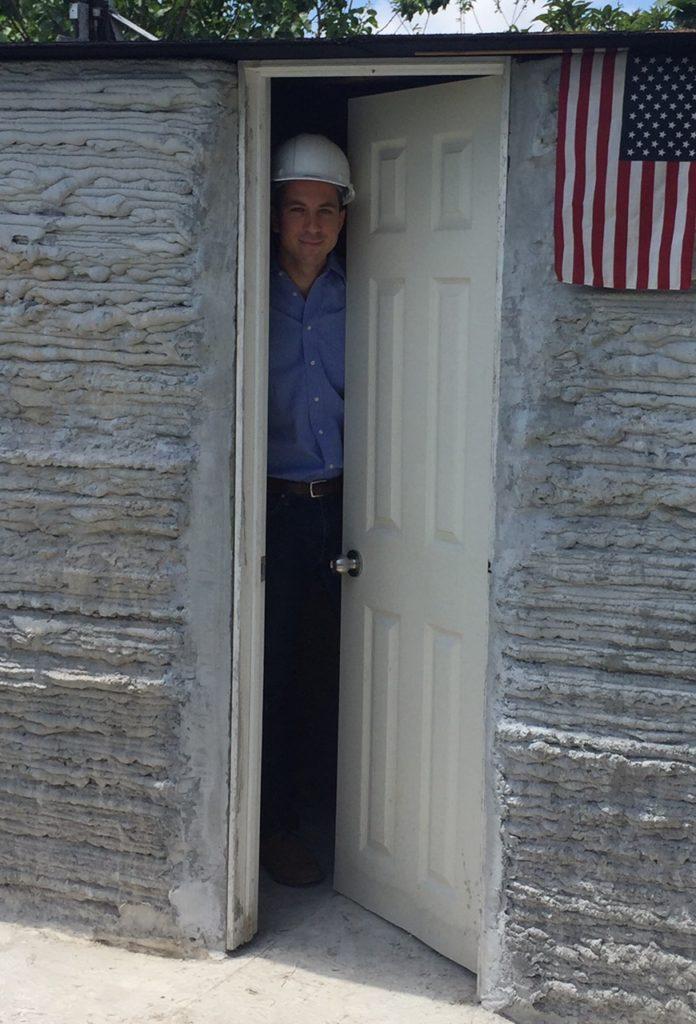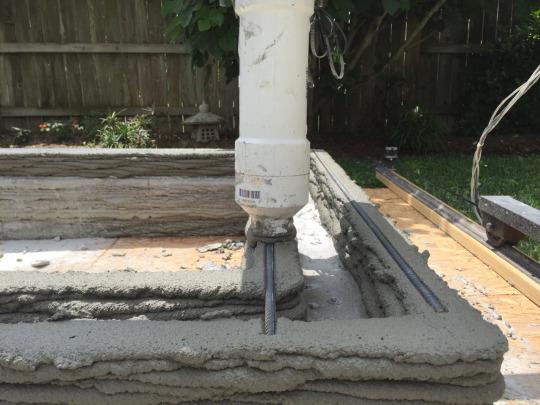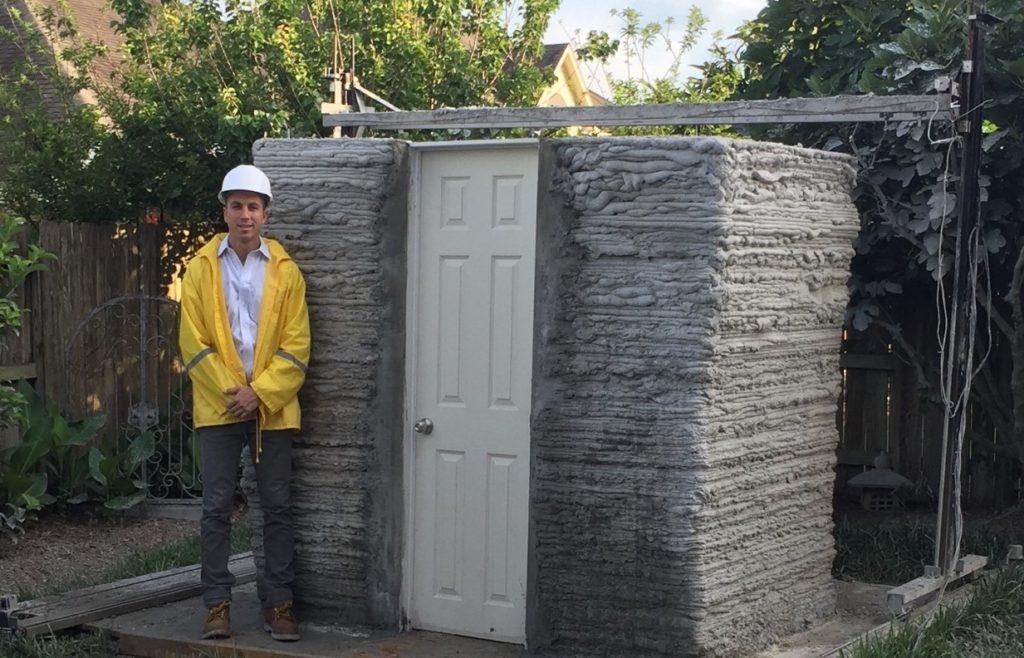 There’s something very alluring about the tiny house movement currently growing in the United States. I can’t imagine living long-term in one of the miniature structures, which tend to measure 400 square feet or less, but I really like the idea of it, and I think the overall trend of downsizing and trying to live a more simple, environmentally friendly, and less wasteful lifestyle is fantastic. The obvious benefits of tiny houses include the fact that they’re much easier and less expensive to construct than homes of more standard sizes, and, as it turns out, they lend themselves perfectly to 3D printing.
There’s something very alluring about the tiny house movement currently growing in the United States. I can’t imagine living long-term in one of the miniature structures, which tend to measure 400 square feet or less, but I really like the idea of it, and I think the overall trend of downsizing and trying to live a more simple, environmentally friendly, and less wasteful lifestyle is fantastic. The obvious benefits of tiny houses include the fact that they’re much easier and less expensive to construct than homes of more standard sizes, and, as it turns out, they lend themselves perfectly to 3D printing.
Engineer Alex Le Roux designed and built a concrete 3D printer last year as a student at Baylor University. His ultimate goal was to 3D print a small house, and now, only a few months after he developed the second iteration of the printer, he’s accomplished what he set out to do. Only a few days after Chinese construction company HuaShang Tengda made global news by 3D printing an entire villa, Le Roux has informed 3DPrint.com that he has successfully built what he states is the first livable 3D printed structure in the United States.
“This latest print has been a continuation of the previous efforts building concrete-substrate 3D printers,” Le Roux told us. “After the first printer was built, people reached out with interest in using printers or using the printer’s services, and it thus became clear that it might make sense to build a business around this technology.”
 The 3D concrete printer, now called the Vesta, took a mere 24 hours to print the entire 8 x 5 x 7 foot structure, which is about as tiny as a tiny house can get – it has an interior of about 7 x 4 square feet. The print speed was .3 feet per second, with one person both operating the computer and feeding concrete to the printer. The material used was an inexpensive, standard Portland cement mix, but Le Roux says that his team is experimenting with more environmentally friendly cements.
The 3D concrete printer, now called the Vesta, took a mere 24 hours to print the entire 8 x 5 x 7 foot structure, which is about as tiny as a tiny house can get – it has an interior of about 7 x 4 square feet. The print speed was .3 feet per second, with one person both operating the computer and feeding concrete to the printer. The material used was an inexpensive, standard Portland cement mix, but Le Roux says that his team is experimenting with more environmentally friendly cements.
The house, which was built in Houston, Texas, was funded partly by Le Roux himself and partly by ModEco Development LLC, a Michigan-based architectural firm that embraces nontraditional and environmentally friendly methods of construction. While the house is even smaller than most tiny houses, Le Roux states that it is fully livable – but he is planning bigger things for the future.
“Moving forward, we will finish the V3 Vesta Printer, begin printing on a fully-up-to code home in Michigan in August, and then perhaps consider raising a more serious round of funding if traction continues at this pace,” he told 3DPrint.com.
 The V2 Vesta 3D printer was used to print the tiny house, and Le Roux expects the third iteration of the printer to be completed in mid-August, at which point construction will commence on the Michigan home, which he is building under contract from a third party. He expects the V3 to be able to print at speeds of nearly one foot per second – dramatically faster than the V2. Summarizing the Vesta’s successful first house, Le Roux enumerates the benefits of 3D printing in construction:
The V2 Vesta 3D printer was used to print the tiny house, and Le Roux expects the third iteration of the printer to be completed in mid-August, at which point construction will commence on the Michigan home, which he is building under contract from a third party. He expects the V3 to be able to print at speeds of nearly one foot per second – dramatically faster than the V2. Summarizing the Vesta’s successful first house, Le Roux enumerates the benefits of 3D printing in construction:
“It is always worth reiterating, the main benefits of concrete-3D printing on a large scale are as follows:
1) higher customization potential
2) near zero construction waste
3) reduced need for manual labor
4) reduced time to complete project”
Those perks have been touted for a long time by experts in the architecture and construction industries, but until very recently they seemed like futuristic dreams. 3D printed buildings were something that would happen one day, somewhere in the future….but suddenly they’re a reality. What are your thoughts on this small building? Discuss further in the 3D Printed Structure forum over at 3DPB.com.
Subscribe to Our Email Newsletter
Stay up-to-date on all the latest news from the 3D printing industry and receive information and offers from third party vendors.
You May Also Like
Gorilla Sports GE’s First 3D Printed Titanium Cast
How do you help a gorilla with a broken arm? Sounds like the start of a bad joke a zookeeper might tell, but it’s an actual dilemma recently faced by...
Nylon 3D Printed Parts Made More Functional with Coatings & Colors
Parts 3D printed from polyamide (PA, Nylon) 12 using powder bed fusion (PBF) are a mainstay in the additive manufacturing (AM) industry. While post-finishing processes have improved the porosity of...
$25M to Back Sintavia’s Largest Expansion of Metal 3D Printing Capacity Since 2019
Sintavia, the digital manufacturing company specializing in mission-critical parts for strategic sectors, announced a $25 million investment to increase its production capacity, the largest expansion to its operations since 2019....
Velo3D Initiates Public Offering in a Bid to Strengthen Financial Foundations and Drive Future Growth
Velo3D (NYSE: VLD) has been among a number of publicly traded 3D printing firms that have attempted to weather the current macroeconomic climate. After posting a challenging financial report for 2023,...
































